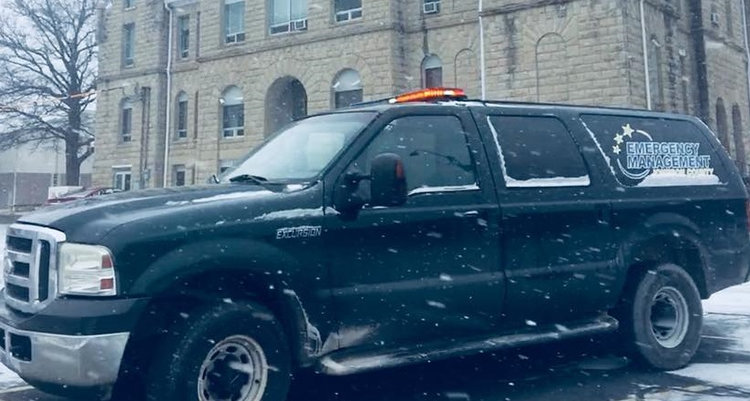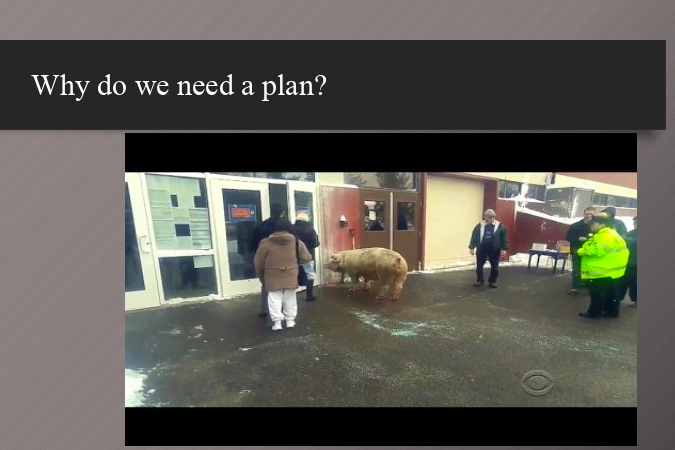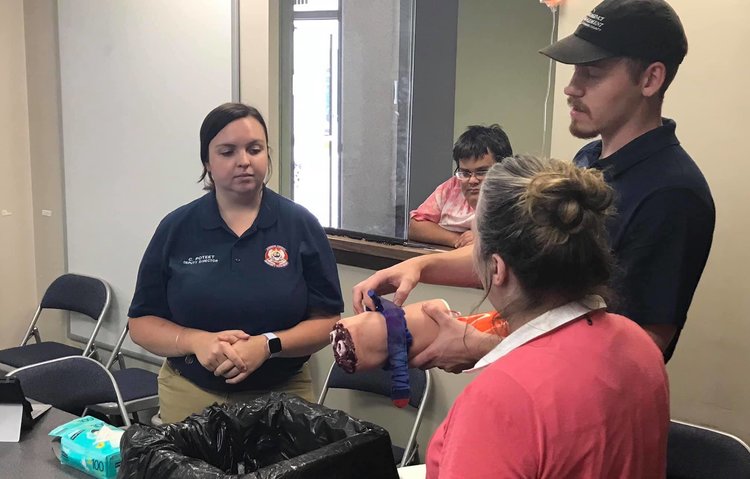Johnson County, Missouri Prepares for Election Day Emergencies
This story was featured in our ELECTricity newsletter in June 2019. Sign up to receive more success stories from election offices across the country. And how is your election office using technology to run excellent elections? Tell us about it by emailing [email protected] — we’d love to share your story!
Nowadays election offices are increasingly safeguarding our elections, usually focusing on cybersecurity. You know what spearphishing looks like, you use two-factor authentication, you have DDoS protection, you’ve done penetration testing. But what happens when a man collapses and poll workers need to perform CPR? Or when a fire starts and the polling place needs to be evacuated? Or when severe weather knocks out the polling place’s power?
Even garden-variety emergencies can derail an election if you’re not prepared to respond. That’s why the elections office in Johnson County, Missouri partnered with emergency management officials to create an Emergency Operations Plan (EOP) for Polling Places. The plan ranges from likely situations (severe weather) to incredibly unlikely situations (bomb threats). Poll workers are trained on the EOP before every election — though thankfully they’ve never had to use it.

Preparing for the Worst
Johnson County, Missouri, not to be confused with the 11 other Johnson Counties in the U.S., has 32,000 registered voters, in between Missouri’s smallest county at 1,500 and its largest at 758,000. Election administration can vary drastically by jurisdiction size, but emergency preparedness is a notable exception. Emergencies can happen anywhere and the steps to mitigate an emergency are fairly consistent.
Before 2017, Johnson County didn’t have an election-specific EOP. Diane Thompson, the Johnson County Clerk, partnered with the county’s Emergency Management Agency to prepare election workers to respond to commonplace scenarios, worst-case scenarios, and everything in between. Diane worked with the director, Troy Armstrong, to decide which scenarios to include in the EOP. Then his team created the EOP using in-house knowledge and best practices from the Department of Homeland Security (DHS) and the Federal Emergency Management Agency (FEMA).

The EOP covers five general scenarios. For medical emergencies, it explains what a 911 responder will ask, whether the person should be moved, and when to administer CPR or an automated external defibrillator (AED). The plan details how to receive weather notifications and seek shelter from extreme weather. In case of fire, the plan explains whether to evacuate or attempt to extinguish the fire. It breaks down the hierarchy of responses to active threats, along with tips on interacting with the threat, any disarmed weapons, and law enforcement. For bomb threats, checklists help identify suspicious packages, communicate with bomb threat callers, and concentrate on remembering important details.
These hypotheticals, especially the last two, can be intimidating. Thankfully, as Troy reminds us, they are extremely unlikely. “In general, we’re not going to see a catastrophic incident occurring at our polling locations; most generally it will be a minor medical emergency or something as simple as a pig showing up!” That actually happened in 2016 — a 600-pound pig wandered around a New Hampshire polling place, and Troy includes this example in his training materials. “Putting a humor spin into learning and planning always makes things such as emergency preparedness a bit more bearable.”

Beyond general emergency practices, the EOP also includes elections-specific information. It lists contact information for the Voter Registration Office and location information for every precinct. The last page of the EOP, customized for each polling place, designates a weather sheltering location and a reunification point. Equipment is ranked by importance — “Critical Priority,” such as the media stick with voting information, “Secondary Priority,” such as voting machines, and “General Priority,” such as unvoted ballots. In the EOP, each of these is assigned to an election worker to gather while evacuating (but only if safe to do so).
“Don’t wait until an event is happening to think about how you will react,” Diane suggests. “Develop a plan, review it regularly, update it when needed and hope you never have to use it. The safety and security of our polling places, our judges, and our voters is a vital part of our jobs.”
Partnering with Emergency Management Experts
At least 45 states have statutes addressing election emergencies, though they usually concern relocating polling places, extending voting hours, or rescheduling the election. The actual logistics (e.g., when and how to evacuate) are handled by the election administrator. Some states provide guidance like EOP templates, but many don’t. “At an annual county clerk conference we attended, I asked the group as a whole if anyone had an emergency operations plan that we could take a look at,” Diane says. “No one raised their hand.”
So Diane started looking for other resources. “JoCo Emergency Management seemed like the logical agency to reach out to,” she explains, and they “were very receptive to the idea of helping us.”
Election officials tend to wear many hats and be experts in many areas. It may come as a relief that you don’t need to develop expertise in emergency management too — a good collaboration will combine your elections expertise with their emergency expertise. “When we started this process,” Troy says, “I knew nothing about polling locations, or election specific information; but I did know emergency operations planning.”

Moving forward, Diane and Troy are considering expanding the partnership, maybe having Troy teach “Stop the Bleed” and “Help Until Help Arrives” classes for election workers. And the new EOP has gotten attention across the state — Troy has even helped other jurisdictions start the process of creating similar EOPs.
Creating a Plan for Your Office
If your office doesn’t have a plan, don’t start from scratch! Your state may provide guidance already (like California and Colorado). Fellow election officials may have EOPs, and state association conferences are a good place to ask around. Johnson County had great success partnering directly with the local emergency management agency, and you shouldn’t hesitate to reach out to yours. Emergency preparedness is a well-developed field, so don’t reinvent the wheel.
“Once the plan is in place,” Troy says, “PRACTICE IT! You could have the greatest plan on paper, but once it’s exercised, you’ll find ‘hiccups’ along the way. Have the plan, exercise it, re-evaluate and adapt it; then test it again! Also, review the plan on an annual basis; locations change, personnel change, procedures change; keep it current!”
Additional Resources
If you have questions for Diane and Troy, you can reach them at [email protected] and [email protected]. And if you have difficulty finding your local emergency management agency, the state-level agencies usually provide local contact information.
The Election Assistance Commission has a round-up of election contingency plans, as well as 6 Tips for Contingency and Disaster Planning and a longer, in-depth chapter on Contingency Planning and Change Management.
Part of your EOP will be election-specific, and even customized for each polling place, but most emergency best practices are universal. Ready.gov provides comprehensive instructions for creating an emergency response plan. It includes a worksheet, templates, and a round-up of best practices for each type of emergency scenario.
How has your office prepared for emergencies? Have you ever needed to put your plan into action? Tell us about your experience by emailing [email protected].